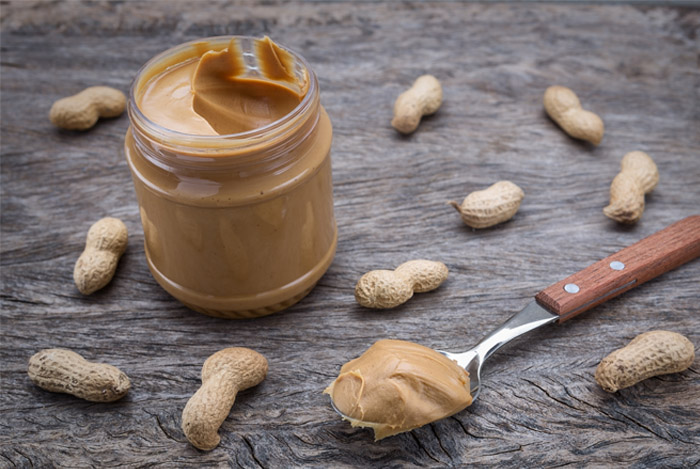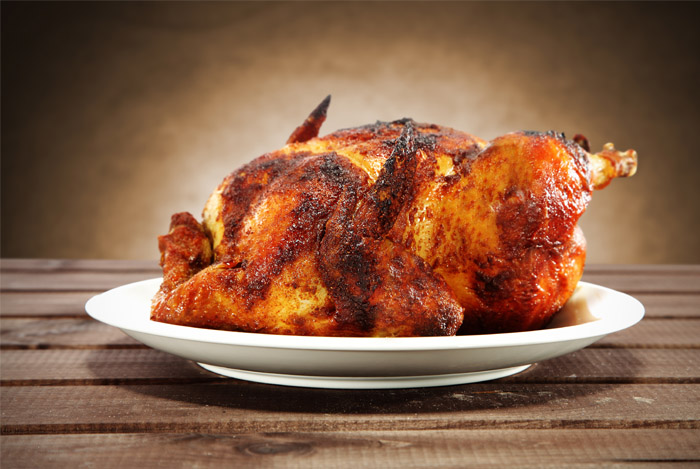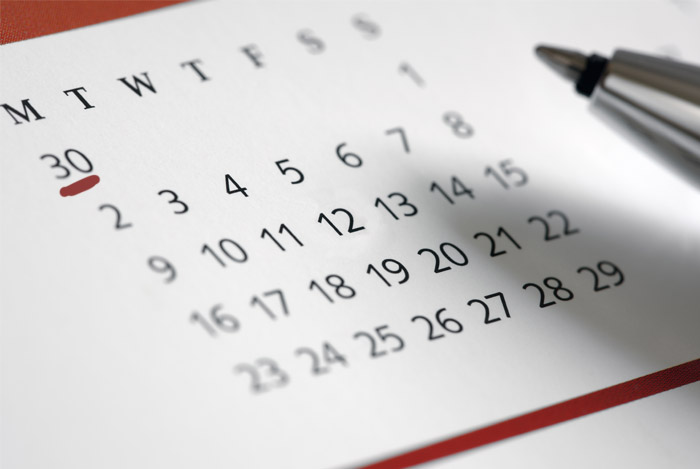If you’re following a healthy eating plan and making sure to get enough exercise, you’re probably at a loss for why you’re not feeling as good as you should be.
I run into clients all the time who tell me how frustrated they are because they can’t figure out what’s stopping them from feeling healthy even though they’re doing everything right. So my advice to them is always the same: let’s start an elimination diet.
An elimination diet basically gives your digestive system a chance for a fresh, clean start, so to speak.
We ingest so many toxic ingredients everyday without realizing it, from chemicals in processed foods to harmful ingredients in fast food. These terrible ingredients can cause health issues like allergies, arthritis, digestive issues, skin abnormalities, inflammation, kidney issues, sleep related problems, and a slew of others.
So by eliminating these “trigger” foods, the theory is that your food sensitives will go away until you reintroduce that trigger food again.
I’ve tried an elimination diet in the past myself, just to see what foods my body was sensitive to. And if you think you may have some type of food allergies, digestive issues, or just a general feeling of yuck, I encourage you to try an elimination diet too.
It’s pretty easy once you know what it entails and the information you learn could be the key to unlocking your best, healthy self.
Why You Should Start an Elimination Diet
 Did you know that our gastrointestinal (GI) tract has its own brain?
Did you know that our gastrointestinal (GI) tract has its own brain?
A little known fact is that the GI tract’s command center is called the enteric nervous system.
Just like our brains operate in the central nervous system, the enteric nervous system operates on its own with its chemical messengers, neurotransmitters, enzymes, bacteria, and hormones. Additionally, 70-80% of our body’s immune system lives in our GI tract.
Dr. Junger, an LA based doctor and author says: “[The gut] is the first point of contact with food and our organisms. That’s where our body should be able to absorb it into the blood or eliminate it”.
Digestive issues and other health problems happen “because the foods are irritants—certain foods will interact with the gut wall and cause it to break down”.
When many people suffering from issues like these bring the news to their doctors, they’re likely to be tested for food allergies. This is totally fine, but keep in mind that these tests are not 100% accurate. Plus, they can be downright expensive.
Don’t you hate when you go through the motions, pay more than you want to, and still have unresolved issues?
If you try an elimination diet, it’s practically free and you don’t have to wait for someone to interpret the results for you (or have your body pricked with needles!) because you’ll be able to feel them.
“And while the average person probably doesn’t suffer from food intolerances, an elimination diet is the best way to identify any problems for those who might”, says nutritionist Rania Batayneh, M.P.H.
Keep in mind, there’s no one, universal elimination diet. The fact is that all foods affect us differently; you may be ok eating nuts, but your sibling may have a nut allergy.
Susan Linke, MS, RD, specializing in chronic inflammatory conditions related to food sensitivities, allergies, and intolerances says:
“Although there are trigger foods or chemicals that are considered more common allergens and others that are more heavily associated with certain diseases, our individual immune systems still have the final say as to what our personal inflammatory triggers are”.
So how do we figure out what our personal food triggers are?
Tell Me How You’re Really Feeling

What would need to change to make you feel your healthiest?
Would your gas and bloating need to go away? Wish your allergies would just take a hike?
Write down a list of anything you experience that seems to be a symptom of poor health. Note anything you’ve been dealing with forever and even those you’ve only felt recently.
Some examples include:
- Acne, skin rashes, constantly dry, itchy, or red skin
- Intermittent constipation or diarrhea
- Bloating, gas
- Anxious, sad, or nervous moods
- Trouble staying or falling asleep
- Low energy levels
- Lack of mental alertness
Your doctor may want to see if your symptoms correlate with any specific medical conditions, so make sure to share what you wrote down during your next visit.
For example, MSG has been linked to symptoms of fibromyalgia. So if you give your doctor a list of symptoms and they happen to correlate with those of fibromyalgia, you’ll probably want to eliminate MSG specifically from your diet.
I want you to keep this list in a safe place because you’ll use it later. And I know this is going to sound lame, but I encourage all my clients to start a journal at this time. This is where you’ll document how your symptoms change and how your body feels during your elimination diet.
2. Get Ready for 30 Days of Total Elimination

This is where the diet earns its namesake.
You see, everything we eat sends information to our bodies during digestion. Sometimes, the food we eat tells our body to react negatively to that food. The immune system then sends out antibodies to fight off the food it considers to be an attacker, not a source of nourishment.
Typically, antibodies reset every 20-30 days. So for best results, I like to err on the safe side and just go a straight 30 days of food elimination.
Technically, the more foods you eliminate from your diet, the broader and more informative your results will be. All of the foods on this list have been known to disrupt the body’s balance in some way or another. And you will become an ingredient label ninja finding them all.
I’m a fan of eliminating the following foods for 30 consecutive days:
- Fast food of all kinds
- Additives like MSG
- All dairy
- Nuts and seeds
- Anything with eggs
- All soy
- Gluten
- Barley
- Couscous
- Oats
- All corn
- Alcohol
- Caffeine
- Beans, lentils, peas
- Shellfish and raw fish
- Pork
- Beef
- Citrus fruits
- Strawberries, grapes, and bananas
- Nightshade veggies (tomato, eggplant, potato, peppers)
- Chocolate and desserts
- Ketchup, mustard, mayo, BBQ sauce
- All refined sugars, honey, maple syrup
If you think you may be sensitive to grains, you should also eliminate buckwheat and rice from your diet as well.
If your doctor thinks you’re probably allergic to a few of these foods and not others, you may be able to eat items off this eliminated foods list that someone else may need to avoid.
Here’s something I always remind people of: If you tend to eat the same thing every day, you may want to stop eating whatever it is for this elimination time period as well. Sometimes our bodies can have an adverse reaction to food if we eat too much of it on a regular basis.
Whew.
We’re done with the scariest part of this diet plan.
Now that you’re fully aware of what you’re giving up, think of all you have to gain!
3. Forming an Elimination Diet
 You’re probably asking yourself what you’re actually going to eat during those 30 days of diet torture.
You’re probably asking yourself what you’re actually going to eat during those 30 days of diet torture.
But fear not!
Since the elimination diet probably got rid of your everyday food staples, we need to come up with a healthy new eating plan. You already know that quick healthy eating requires some planning and isn’t as easy as fast food or prepackaged dinners. But it also doesn’t make us sick. So you’re going to focus on a very veggie friendly diet that’s rich in lean meat.
During 30 days of elimination, you’re allowed to eat:
- Cold water fish (skip the tuna and swordfish just to rule out mercury)
- Chicken
- Turkey
- Lamb
- Game meats
- Healthy fats from good oils (olive, avocado, flax, etc.)
- Non-citrus fruits
- Veggies outside of the nightshade family (except sweet potato and yams; they’re ok)
- Herbal teas
- Lots of water!
Even though we eliminated gluten, be careful not to replace your refined carbs with gluten free refined carbs. Always watch your carbs and sugars, as these two bad guys are known to disrupt the body.
4. Take the Next 30 Days to Listen to Your Body

Remember that list we wrote at the beginning of our diet?
I want you to use that list and document how those symptoms improve or get worse during the next 30 days. You may also want to jot down any foods you eat that are typically out of the ordinary for you, making sure to pay attention to how they affect you afterwards.
I’m talking about pretending like you’re a scientist and your body is the experiment. I want you to document every night of sleep, your moods and energy levels, your digestive and bowel feelings, your allergies, etc. Leave out nothing.
This will all be valuable information for both you and your doctor.
Once you see your symptoms decreasing in severity, you can start to think about reintroducing some foods back to your diet.
5. Finally! Give Me All the Ice Cream You Have
 Day 30 will be a delightful day for you, I already know it. Day 30 is when you start thinking about the first eliminated food item you want to bring back into your life.
Day 30 will be a delightful day for you, I already know it. Day 30 is when you start thinking about the first eliminated food item you want to bring back into your life.
Yes, you only get one, so make sure you really think it through.
The first time I tried an elimination diet, I couldn’t wait to welcome cheese back to my life (I may have a cheese problem). So once you pick your one item, eat it and pay very close attention to how you feel after eating that food for the next 48 hours.
If you’re reaction free after 48 hours, try eating that food again. Monitor your body for another 48 hours. If you still feel just as healthy as you did eliminating that food, that food may not be what’s causing you to feel unwell. You’ll then decide if you want to add this food back to your menu rotation.
If all goes well, you can start reintroducing other foods one at a time and repeat the same 48 hour monitoring process.
Now if you notice that something immediately makes you feel horrible, the way you did before you started your diet, you should definitely stay away from it in the future.
The same goes for foods that affect you later, like towards the end of the 48 hour mark. These foods may take a long time for your body to digest and put it through unnecessary strain that makes you feel terrible in the process. I’d definitely avoid those food items too.
Keep an eye out for symptoms such as:
- Fatigue
- Headaches
- Bloating
- Bowel changes
- GI pain or upset
- Skin breakouts, rashes, color change
- Insomnia
- Joint pain
- Sinus/respiratory troubles
- Foggy thinking
When these symptoms return, make a note of it in your journal and move on to the next food on your reintroduction list after a 48 hour clear, symptom free window has passed.
Tips for a Successful Elimination Diet
Look, I know this diet will probably be one of the hardest you’ll ever attempt.
But it might actually be the one that helps solve your biggest health annoyances.
To prepare you for success, make sure to keep these tips in mind.
Be Prepared
 One to two weeks before you plan on starting the elimination diet, make sure to look up some recipes on the internet (Pinterest is a huge help), and buy the groceries you’ll need.
One to two weeks before you plan on starting the elimination diet, make sure to look up some recipes on the internet (Pinterest is a huge help), and buy the groceries you’ll need.
I would also recommend cleaning out your pantry or refrigerator of any items included on the elimination list. Remember, if you give in to your temptations and eat something from the unapproved list, you’ll set your diet back another month.
This is a great opportunity to re-fill your kitchen with local, organic produce.
Check Out That Farmer’s Market
 Loading up on veggies can sometimes lack excitement. But I always feel inspired after a morning at the farmer’s market.
Loading up on veggies can sometimes lack excitement. But I always feel inspired after a morning at the farmer’s market.
There’s something so wonderful about meeting local growers who beam with pride when talking about the organic fruits and veggies they bring to the neighborhood table.
Get in the habit of asking how the farmers or vendors enjoy the superfoods they grow and sell. Chances are, they’ll give you a new recipe to try out that highlights their bounty. You may just start to love some fruits or veggies you previously ignored.
Plus, this is a great opportunity to get your kids involved in meal planning. Kids can’t help but get lost in the array of beautiful, delicious produce out for them to interact with.
The Goal is Not to Lose Weight
 Some people report losing extra weight, especially around the tummy area, after following an elimination diet. Others lose a ton of water weight due to decreased inflammation. Because of these sort of unintended results, the elimination diet has become just as popular as other diet plans for weight loss.
Some people report losing extra weight, especially around the tummy area, after following an elimination diet. Others lose a ton of water weight due to decreased inflammation. Because of these sort of unintended results, the elimination diet has become just as popular as other diet plans for weight loss.
However, the elimination diet is not a weight loss focused diet. Remember, we’re testing for food sensitivities and intolerance.
If you happen to lose weight because you’re eating more veggies and eliminating sugar and processed foods, hey, that’s fantastic. But don’t obsess over pounds when you step on the scale. And don’t turn to this diet for quick weight loss results either.
If weight loss is your goal, the elimination diet will help you figure out what foods are keeping you from a lean, flat tummy, and you can move on from there.
After your elimination diet is over, you could try my amazing weight loss drink to help you jump start a healthy weight loss regime.
If you’ve been tired of feeling sick, and sick of feeling tired, and suspect food allergies or sensitivities are to blame, you owe it to yourself to try an elimination diet.
Even though results will vary based on your specific sensitivities, the elimination diet is a good way to establish a healthy baseline. When you’re eating clean, you’ll get to know how your body feels on good food.
You’ll then be more in tune with how bad food affects your body. And that’s a pretty great deterrent from eating inflammatory inducing junk foods in the future, so it’s a win-win all around.
Do you think you’ll try the elimination diet? What health issues would you like to get rid of? Share your thoughts with me in the comments!
The post Why the Elimination Diet Could be the Key to Your Good Health appeared first on Nutrition Secrets.
http://www.nutritionsecrets.com/elimination-diet/
No comments:
Post a Comment